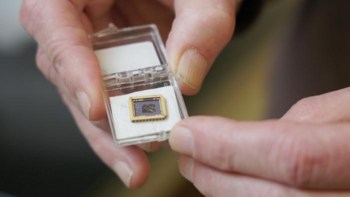Researchers in Korea have shown that liquid water can freeze into ice at room temperature under certain conditions. Heon Kang and co-workers at Seoul National University confined water in a nano-sized gap and showed that it froze when an electric field was applied (Phys. Rev. Lett. 95 085701). The result could have implications for the formation of ice in a wide variety of natural environments.
Kang and co-workers trapped the water in a nanometre wide gap between the gold-plated tip of a scanning tunnelling microscope (STM) and a gold surface. Previously it had been predicted that water would freeze above its normal freezing point if an electric field of 109 volts per metre was applied. However, the Seoul team found that the water froze in a much weaker electric field of just 106 volts per metre.
The team detected the ice through its effect on the vibrating tip of the STM. The tip was made to oscillate with a small amplitude and high-frequency as it was moved slowly toward the surface. The ice resists the motion of the tip much more than liquid water. Ice has been observed at room temperature before, but only under extremely high pressures.
“The discovery may affect our understanding of ice formation phenomena in diverse natural environments, such as within crevices in rocks and at biological and electrochemical interfaces,” Kang told PhysicsWeb. “Interfacial water freezing might also affect nano-sized electrical devices.”
Kang is now thinking about further experiments to determine how the combination of confinement and an electric field leads to freezing at such high temperatures.



